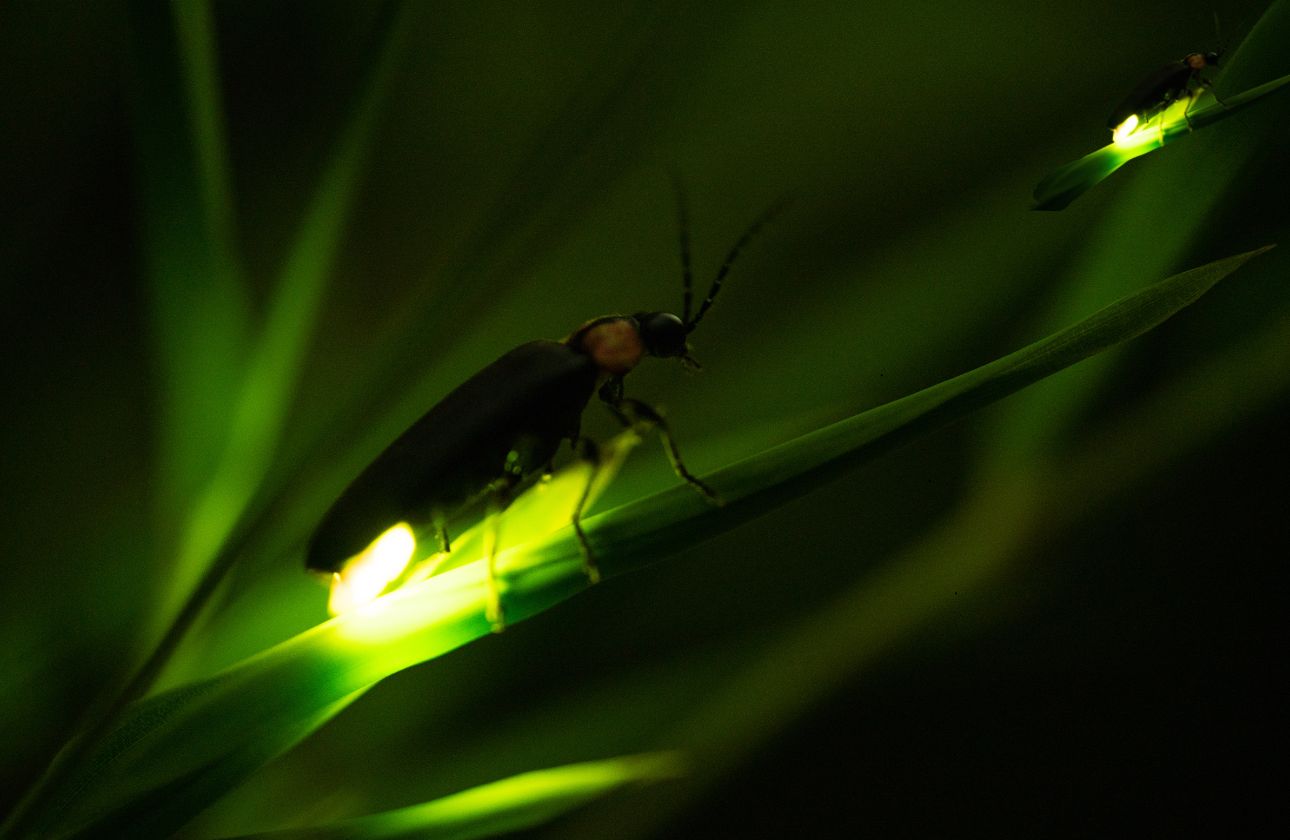World of Bioluminescent Organisms
Bioluminescence is one of nature's most fascinating phenomena, where living organisms produce light through biochemical reactions. From the deep, dark ocean to the forest floor, bioluminescent creatures offer a mesmerizing glimpse into the magic of nature. This glowing phenomenon has evolved across a variety of species, from fireflies lighting up summer nights to the deep-sea creatures illuminating the vast ocean. In this article, we’ll explore the science behind bioluminescence, its purpose in the natural world, and some of the most stunning bioluminescent organisms.
What is Bioluminescence?
Bioluminescence is the production and emission of light by living organisms. The light is produced through a chemical reaction that involves a light-emitting molecule called luciferin, and an enzyme called luciferase. When luciferin reacts with oxygen, the enzyme catalyzes the reaction, producing light as a byproduct.
The light emitted can vary in color depending on the organism. Most commonly, bioluminescence produces blue and green light, but in some species, it can range to red or yellow. The glow is typically very efficient, meaning little to no heat is produced, which is why it’s often referred to as "cold light."
Why Do Organisms Glow?
Bioluminescence is not just a random phenomenon; it serves various important purposes in the natural world:
-
Attraction: For many species, bioluminescence is used to attract mates. For example, fireflies flash their light in intricate patterns to communicate with potential partners.
-
Defense: Some bioluminescent organisms, like certain species of squid and shrimp, emit light to confuse or evade predators. This "startling" light display can disorient predators, providing a quick escape.
-
Camouflage: In the depths of the ocean, many deep-sea creatures use bioluminescence for counter-illumination. By emitting light from their underside, these organisms blend in with the faint light from the surface, making it harder for predators to spot them.
-
Hunting: Certain creatures, such as the anglerfish, use bioluminescence to attract prey. The anglerfish has a glowing lure that dangles in front of its mouth, attracting smaller fish or organisms toward it, where they become easy targets.
-
Communication: For some species, bioluminescence serves as a means of communication, allowing them to signal other members of their species, especially in the dark, deep environments they inhabit.
Examples of Bioluminescent Organisms
The world of bioluminescence is vast, with a wide range of organisms displaying this phenomenon in diverse ways. Here are a few examples of bioluminescent organisms that have captivated the imagination of people worldwide:
-
Fireflies: Perhaps the most iconic bioluminescent organism, fireflies use light to communicate with each other during mating. Each species of firefly has its own unique flash pattern, which helps males and females identify one another.
-
Jellyfish: Several species of jellyfish, including the Aequorea victoria, are bioluminescent. These jellyfish glow as a defense mechanism, startling predators and allowing them to escape.
-
Anglerfish: Found in the deep ocean, the anglerfish is famous for its glowing lure. This bioluminescent appendage, located on top of the fish’s head, attracts smaller fish, which are then easily snatched up by the anglerfish.
-
Fungi: Yes, fungi can glow too! Species like the Mycena genus emit a gentle, greenish light, a phenomenon known as “foxfire.” This glow is often seen on decaying wood and plays a role in attracting insects, which help disperse the fungus’s spores.
-
Dinoflagellates: These microscopic plankton emit bright flashes of light when disturbed, a phenomenon that can create stunning "glow-in-the-water" effects in oceans and coastal waters. Some people refer to this as the "milky seas" effect.
-
Firefly Squid: The firefly squid is found off the coast of Japan, and it glows brilliantly in the deep sea. These squids use their light for both defense and attracting prey.
-
Lanternfish: These small, deep-sea fish are bioluminescent and use their glowing bodies to attract mates and to camouflage themselves from predators.
The Importance of Bioluminescence in Ecosystems
Bioluminescence plays a crucial role in various ecosystems, particularly in marine environments. For example:
-
Predator-Prey Dynamics: The glowing abilities of certain organisms, such as deep-sea fish and squid, help them in both hunting and evading predators, shaping the balance of the ecosystem.
-
Biodiversity and Research: Scientists are studying bioluminescence to gain deeper insights into marine life and biodiversity. The use of bioluminescent markers in research has also helped advance medical and biological studies, including tracking gene expression and cellular functions.
Bioluminescence in Human Culture and Technology
Aside from its role in nature, bioluminescence has also inspired various human applications:
-
Medical Research: Bioluminescence is used in medical research for imaging and diagnostics. For example, bioluminescent proteins help scientists track the progression of diseases or monitor the effects of drugs.
-
Entertainment and Art: The mesmerizing glow of bioluminescent organisms has inspired works of art, photography, and visual media, especially in the world of animation and special effects.
-
Bioluminescent Lighting: Research into creating artificial bioluminescence has led to the development of sustainable lighting solutions. The aim is to create energy-efficient, eco-friendly light sources inspired by natural light production.
The enchanting world of bioluminescent organisms showcases the astonishing beauty and complexity of life on Earth. Whether it's the mysterious glow of a firefly or the ethereal light of a deep-sea creature, bioluminescence reveals nature's ability to adapt and thrive in some of the harshest environments. This phenomenon continues to captivate both scientists and the general public, sparking curiosity and admiration for the wonders of the natural world.
As we continue to study and explore bioluminescence, we not only uncover the secrets of these glowing organisms but also discover new possibilities for technology and sustainable living. The future of bioluminescence holds immense potential, and we are just beginning to scratch the surface of its possibilities.




Comments (0)